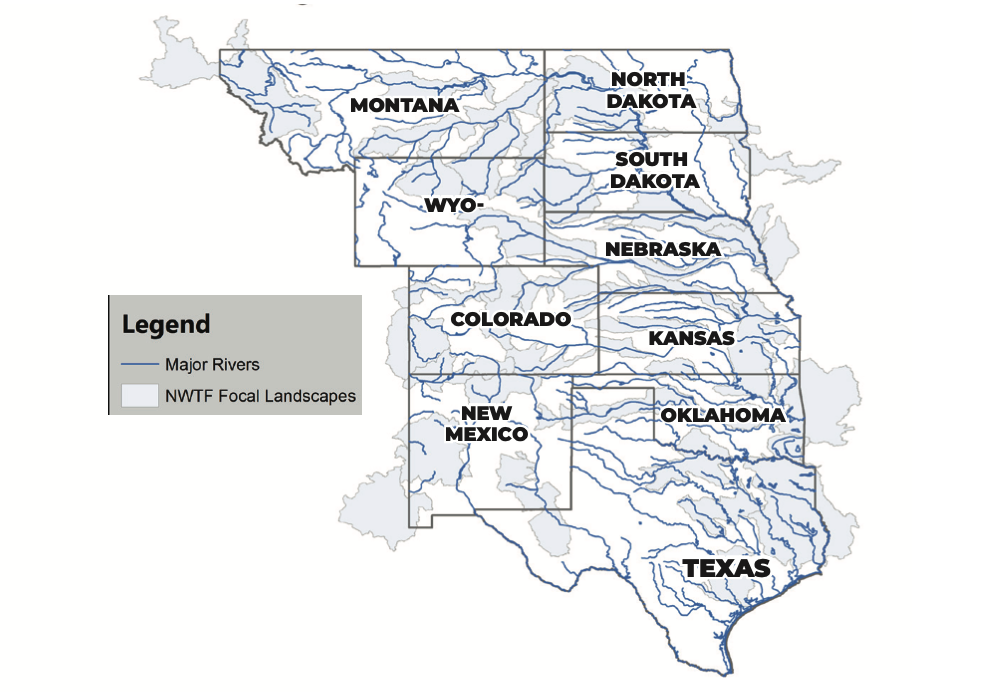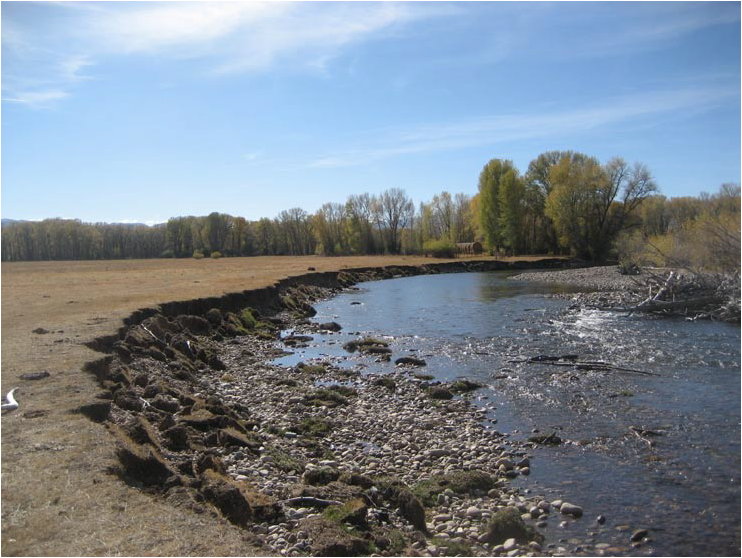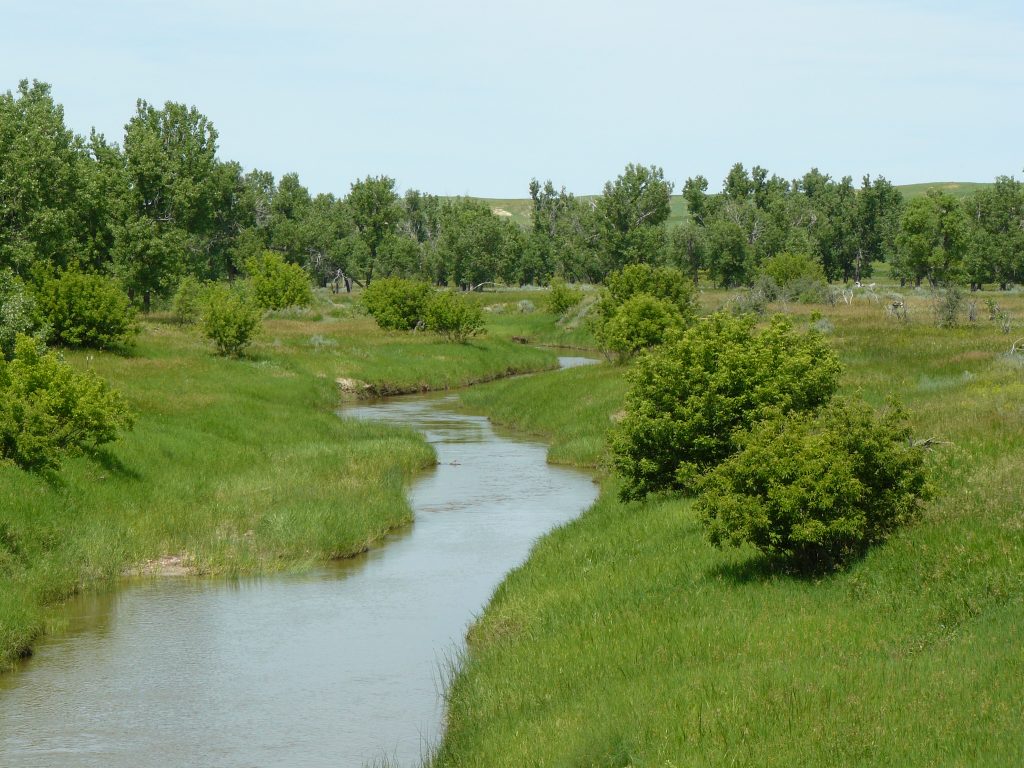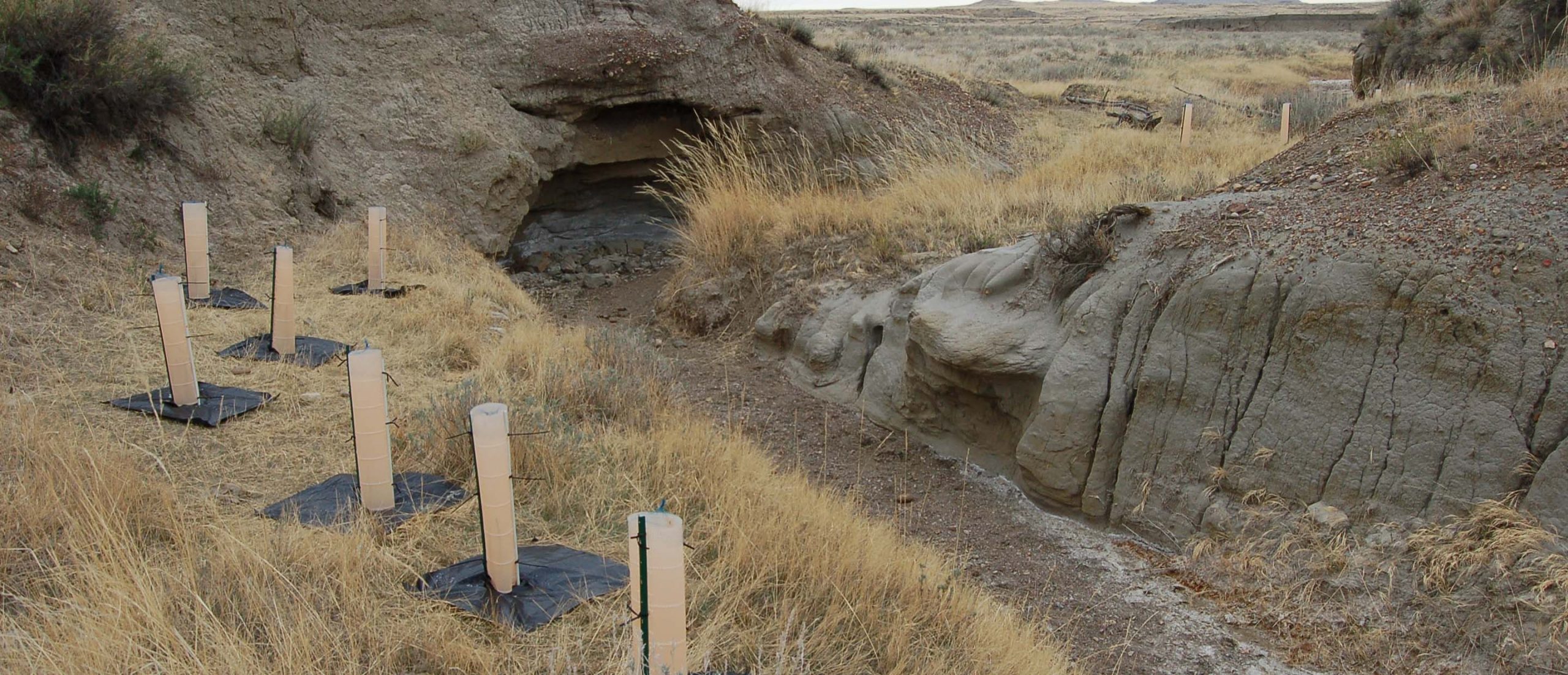Waterways for Wildlife
This comprehensive “boots-on-the-ground” effort is addressing urgent conservation needs in riparian ecosystems, largely situated along creeks, streams and rivers within the broad landscapes NWTF dubs America’s Great Open Spaces and America’s Western Wildlands.
Water is central to life and a variety of mammals and birds, including our iconic wild turkey, thrive in habitats associated with vital waterways.
Enter NWTF’s Waterways for Wildlife Initiative. This comprehensive “boots-on-the-ground” effort is addressing urgent conservation needs in riparian ecosystems, largely situated along creeks, streams and rivers within the broad landscapes NWTF dubs America’s Great Open Spaces and America’s Western Wildlands.
Unfortunately, many of these ecosystems are in poor condition, sorely in need of restoration. While natural periods of flood and drought play a critical role in shaping and maintaining riparian health, factors like incompatible livestock grazing and agricultural practices, residential development and an ever-increasing water demand by humans, can compound these effects, resulting in degraded ecosystems. In aggregate, they can wreak havoc on these riparian zones, negatively impacting plants and animals that generally thrive in these locales.
“Riparian areas can be an important provider of surface and ground water in parts of this somewhat arid region,” said Jared McJunkin, NWTF Central Region director of conservation operations. “Water can be limiting in some areas of this region not only for wildlife, but water is also essential for agricultural production operations needed to help feed the world.”
Beyond water quantity, water quality is also essential. Not only do riparian areas store water and recharge aquifers, the plants, soils and wetlands associated with them serve to filter pesticides, herbicides and sediment before they travel into downstream water supplies.
The Waterways for Wildlife initiative aims to work with land managers, producers and agricultural interests for sustainable solutions to help them in their efforts to provide food and goods for Americans, while conserving critical habitat for wild turkeys and other wildlife.
The initiative involves the NWTF partnering with landowners, governmental agencies, as well as other conservation organizations, concentrating efforts to slow and reverse the decline of these essential waterways.
The Plan
Over the next 10 years, the NWTF is targeting 75,000 acres of wildlife habitat for improvement. The land traverses the country from top to bottom, residing along 1,500 linear miles of Great Plains waterways in Colorado, Kansas, Nebraska, Oklahoma, New Mexico, North Dakota, Montana, South Dakota, Texas and Wyoming.
Healthy plant and animal communities, erosion control measures and improved water quality will be key outcomes. Everything — plants, animals, fish and people — benefits when water quality is protected and improved. And, of course, favored pursuits such as hunting, fishing, camping, hiking and birdwatching receive a boost, which directly aids the economies within the initiative’s target areas.



“Riparian areas provide critical habitat for a wide variety of wildlife species,” McJunkin said. “They serve as migration corridors for big game and habitat for important species like the bald eagle and neo-tropical migrating songbirds, as well as migrating waterfowl and countless aquatic species. When the diversity of plant communities next to the river or stream is considered, there are additional positives to a wide variety of upland game bird species as well.”
Which brings us to the wild turkey, our species of key interest.
“Riparian areas provide critical roosting habitat for wild turkeys and are especially important in the grassland dominated landscapes found in America’s Great Open Spaces and America’s Western Wildlands, where this initiative is focused,” McJunkin said.
The Resources
Numerous projects are in the works, ranging from addressing important research needs, providing education and outreach to protecting these important areas through acquisitions and easements when appropriate. Then there is the actual spadework — planting trees, shrubs and native grasses, removing invasive plant species, improving agricultural infrastructure and fencing riparian areas to help landowners better manage livestock.
This work requires extensive funding. The NWTF seeks to raise some $10 million in private funding over the course of the next 10 years, then leverage $40 million in matching funds to get to the $50 million needed to make the Waterways for Wildlife Initiative successful.
“This effort is structured to build on the NWTF’s past success working to restore riparian areas in this region,” McJunkin said. “Our hope is to build a larger collaborative effort and engage new and nontraditional interests such as agriculture producers, municipalities and others who also rely on the water and the habitat riparian areas provide.”
McJunkin said the NWTF’s past track record in raising funds for critical work leaves him optimistic.
“If our past successes in riparian restoration hold true, we could see match rates of 10-to-1, or even 20-to-1, on investments into the Waterways for Wildlife initiative,” he said. “We, the NWTF, will generate the critical seed money needed to help fund the highest priority, on-the-ground conservation work to improve riparian areas for future generations.”
Helping landowners keep livestock contained is another aspect of the initiative that will prevent further degrading of streamside, or riparian, areas.
Riparian Zones: Critical Streamside Corridors
Commonly referred to as riparian corridors or zones, riparian areas are natural ecosystems located along the banks of rivers, streams, creeks or any other water network. While riparian areas make up less than 1.5% of the entire landscape in the Great Plains, more than 70% of all plains wildlife species depend upon these ecosystems for water, food, cover, roosting, nesting and as travel corridors.

To address critical riparian conservation issues, the NWTF is partnering with landowners, governmental agencies, conservation organizations and others to restore these vitally important ecosystems across the landscape. Over the next 10 years, the NWTF seeks to raise $10 million in private funding and leverage $40 million in matching partner funds to improve 75,000 acres of wildlife habitat along 1,500 linear miles of waterways in the Great Plains landscape.
